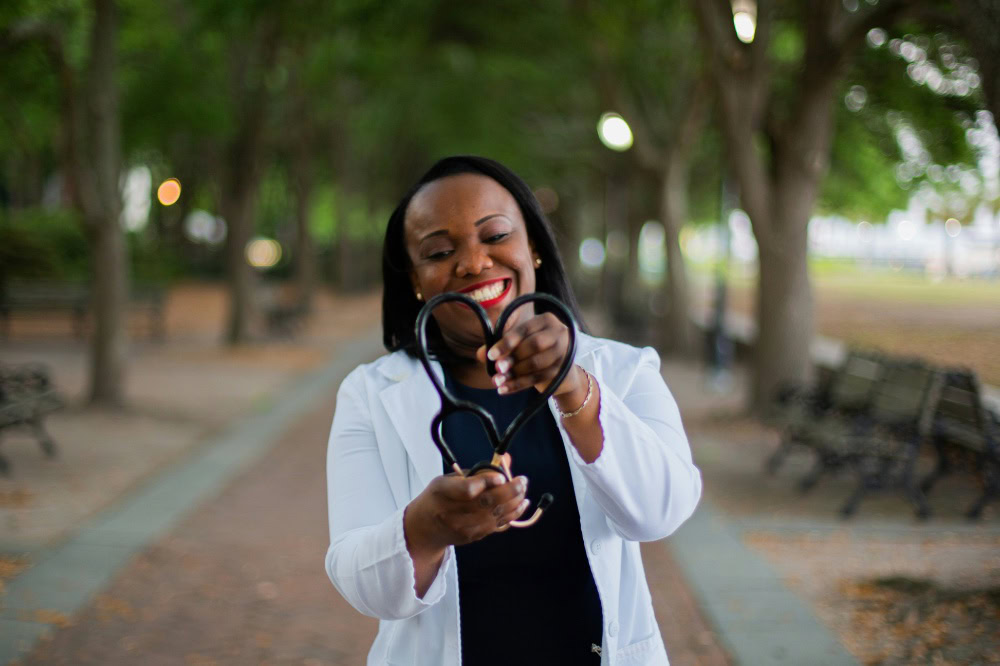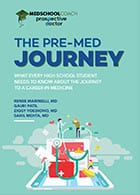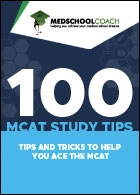
Table of Contents
In 2024, an average of 52 applications were submitted to each specialty by MD and DO students in the residency Match, and 54 by IMGs. However, these figures range widely by specialty, program type (MD or DO), and whether or not a student is classified as an IMG.
According to the AAMC, individual students at U.S. medical schools submitted an average of 78 ERAS applications in 2023, while IMGs submitted 144 (nearly double!).
For the 2025/26 cycle, the AAMC found that students submitted an average of 7.3% fewer residency program applications than the previous year. Some specialties, dermatology and otolaryngology among them, saw much larger decreases of 35-40% fewer applicants for this cycle.
This is likely due to the introduction of program signals, allowing medical students to identify preferred programs earlier in the Match process. It also decreases the cost of residency applications for students as well as the total number of applications each program director must sort through (both of which are generally good things for both students and programs).
Let’s talk about how these numbers break down and how you can use them when applying to residency programs.
Read Next:Caribbean Medical Schools: Pros, Cons, and the Top 6 Schools
Number of Residency Applications Submitted Per Specialty* (2024)
| Specialty | U.S. MD | U.S. DO | IMG |
| Anesthesiology | 57 | 68 | 60 |
| Child Neurology | 27 | 31 | 24 |
| Dermatology | 62 | 43 | 42 |
| Emergency Medicine | 42 | 50 | 47 |
| Family Medicine | 32 | 46 | 54 |
| General Surgery | 63 | 74 | 80 |
| Internal Medicine | 35 | 58 | 110 |
| Medicine-Pediatrics | 33 | 27 | 13 |
| Neurological Surgery | 70 | 69 | 71 |
| Neurology | 43 | 58 | 56 |
| Obstetrics-Gynecology | 63 | 75 | 70 |
| Orthopaedic Surgery | 66 | 52 | 55 |
| Otolaryngology | 59 | 48 | 45 |
| Pathology | 34 | 43 | 62 |
| Pediatrics | 30 | 50 | 57 |
| Physical Medicine and Rehabilitation | 49 | 61 | 35 |
| Plastic Surgery | 30 | 22 | 21 |
| Psychiatry | 63 | 81 | 65 |
| Radiation Oncology | 34 | 46 | 39 |
| Radiology | 74 | 77 | 63 |
| Surgery Preliminary | 63 | 74 | 80 |
| Vascular Surgery | 55 | 35 | 31 |
*Source: ERAS® Statistics | AAMC
How Many Residency Programs Should You Apply To?
The ideal number of residency programs you should apply to varies widely depending on a number of factors. The two biggest factors are the location of your medical school (U.S. or international) and the specialties you’re interested in.
School Location: International medical graduates (IMGs) will likely need to apply to more programs than U.S. MD or DO students because IMGs participating in the NRMP historically have a harder time securing interviews. (I discuss the reasons for this in more detail below.)
Specialty: The number of programs you should apply to also depends on your goal specialty. Above, you can see the average number of applications students submitted per specialty for the 2024 cycle, broken down by status as a U.S. MD, U.S. DO, or IMG student.
For the best chance of matching into your preferred specialty, you should be in the ballpark of the averages found in that chart. (For instance, if you’re a U.S. DO student interested in anesthesiology, consider applying to roughly 68 programs.)
It is important to understand that these numbers are just averages. The exact number of programs you should apply to should ultimately come down to a number of personal factors, including your grades, COMLEX or USMLE scores, research experience, extracurriculars, and more.
If you have a strong application, you may be able to get away with applying to fewer programs than indicated by the chart above. If your application has some gaps, you may benefit from sending more applications.
Another factor to consider is the competitiveness of the programs you’re applying to. If you plan to apply to highly competitive programs, you may need to submit more applications to maximize your chance of success.
Lastly, don’t forget about application fees. Student loans sometimes cover these, but not always. Consider your financial burden when determining your ideal number of applications.
Application fees are as follows:
- Up to 10 applications: $99
- 11-20 applications: $19 each
- 21-30 applications: $23 each
- 31 or more applications: $27 each
Ultimately, your best bet for deciding how many specialties and programs to apply to is to seek 1-on-1 support from a residency Match advisor. An advisor can help maximize your chance of success, given your individual circumstances.
97% of our residency advising clients match into the specialty of their choice. Find out how to strengthen your application and increase your chances.
Is the Residency Match Process Becoming More Competitive?
The short answer is yes. Residency admissions has changed drastically over the years, even though the famous Match algorithm has remained the same. Today’s medical students submit more applications (and pay more application fees) than applicants 10 years ago, raising concerns that the process is becoming unsustainable.
The growth in application submissions has also placed a burden on residency program directors, who have to sift through more and more applications every year. The result? More applications are screened out at a glance, based on metrics like grades and test scores.
Below is a table of the average applications submitted per student** for some of the major fields of medicine. I included 3 different years (2015, 2019, and 2024) so you can see the growth rate.
| SPECIALTY | 2015 ERAS Applications | 2019 ERAS Applications | 2024 ERAS Applications |
| Internal medicine | 35 | 62 | 78 |
| Radiology | 42 | 57 | 72 |
| General Surgery | 58 | 52 | 71 |
| Neurological Surgery | (not available) | 63 | 70 |
| Psychiatry | 22 | 52 | 68 |
| OB-GYN | 36 | 61 | 67 |
| Urology | (not available) | 69 | 66 |
| Orthopedic Surgery | (not available) | 74 | 62 |
| Anesthesiology | 32 | 47 | 60 |
| Dermatology | (not available) | 72 | 57 |
| Otolaryngology | (not available) | 64 | 57 |
| Neurology | (not available) | 39 | 52 |
| Family medicine | 24 | 54 | 47 |
| Emergency medicine | 41 | 58 | 46 |
| Vascular Surgery | (not available) | 28 | 44 |
| Pediatrics | 26 | 41 | 44 |
| Plastic Surgery | (not available) | 55 | 28 |
**Source: Association of American Medical Colleges (AAMC). (Note: 2015 data not available for all specialties.)
Read more: Categorical vs. Preliminary vs. Advanced Residencies
Program Signaling May Change This Trend
Residency program signals have been around for five years or so, and the ability to signal preferred programs may be one explanation for the drop in residency applications per student in the 2024/25 cycle.
Over 90% of residency programs allowed students to signal them in the previous cycle, and a majority of program directors report using them as a considerable factor in their application review process. When applying to residency, I strongly recommend students max out their limit of program signals to ensure they have the best shot at getting interviewed by their preferred programs.
For more on program signals and how to use them, check out my comprehensive guide to signaling.
Need to pace your submissions? Our ERAS timeline spells out every 2025‑26 deadline.
Read Next: Medical School vs. Residency: What to Expect
How to Select Residency Programs
Your greatest chance at getting matched is selecting the best residency programs for yourself based on several factors. It’s less about raw numbers and more about how you fit.
For the best results, apply to programs that best align with your:
- Experience
- Preferred specialty
- Preferred location
- USMLE step 2 score for MD students or COMLEX Level 2 score for osteopathic students
- Clerkship grades
- Extracurricular activities and leadership roles
- Letters of recommendation
- Dean’s Letter (MSPE)
- Med school GPA or class rank
- Mission and vision for your career as a future physician
Read More: Components of a Residency Application
The more competitive specialties you choose, the better your stats need to be to qualify. If you’re a pretty average student with less-than-phenomenal test scores and grades, you probably shouldn’t apply to the most competitive and prestigious specialties.
That said, the residency application process is just one part of your medical education journey. Don’t settle — aim for your ideal medical residency, given your stats, experience, and goals for the future.
Learn More: Average Residency Salary by Specialty + Job Level
Considerations for IMGs
International medical graduates (IMGs) have a harder time getting matched because they have gone to a non-U.S. medical school, including Caribbean medical schools. On average, IMGs applied to nearly double the number of residency programs in 2023 as U.S. medical graduates (144 vs. 78).
A lower percentage of IMGs get matched compared to U.S. and Canadian med students; therefore, IMGs must often apply to more residencies to get good results in this increasingly competitive landscape.
I typically recommend that IMGs apply to at least 100 residency programs with the goal of securing 8-10 interview invites. Numbers like those should give you an 80-90% chance of matching, though that could vary depending on the quality of your application.
IMGs also need to consider the following when applying, whereas a U.S./Canada student doesn’t:
- US citizenship — Citizens of the United States who studied medicine abroad are IMGs, but they have a slightly higher chance of matching with their preferred residency than non-citizen IMGs. If you’re a US citizen, you may be able to apply to fewer programs than non-US citizens, perhaps 30-60 depending on your grades.
- US clinical experience — Most programs prefer (or require) you to have clinical experience completed in the US, including internships, sub-internships, externships, clerkships, or any clinical rotations inside the US.
- Visa needs — IMGs are expected to do their own research into whether a given residency program meets their visa needs.
- English proficiency — Use your personal statement section to demonstrate strong proficiency in the English language.
- IMG-friendliness — Certain states, specialties, and programs are more IMG-friendly than others. Seek out the most IMG-friendly residency programs to save your limited time while increasing your chance of matching. The IMG-friendliest specialties are usually family medicine, internal medicine, and pediatrics.
Read Next: How Much Doctors Make (By Specialty, Location, and More)
The fact that IMGs participating in the NRMP are offered fewer interviews is likely due to the limited number of U.S. residency spots and the fact that program directors may have a harder time gauging the quality of international graduates.
How Many Programs Should You Rank?
Most students should include at least 10-12 residency programs on their rank order list.
After applying to the Match and completing residency interviews, you’ll create a rank order list (ROL). This list is paired with the NRMP’s matching system, which also uses a list created by residency program directors of their preferred students in order.
Your rank order list determines how you match with the residency programs that rank you high on their lists. Rank the residency positions you’re most interested in highest on your list.
Rank all residency programs where you interviewed and where you’re comfortable accepting a position. There is no limit or fee for ranking more programs. For most students, this means ranking between 10 and 12 programs in total.
For the best results, honestly rank your programs according to your true preference.
Your match placement is binding. Don’t get stuck in a program you’re not truly interested in and passionate about just because you ranked it high on your list after thinking it might be easier to match there.
Consider sending a letter of intent to your #1 ranked school, letting them know they are at the top of your list.
Read Next: Medical Specialties with Good Work/Life Balance and Low Burnout Rates
Get Residency Application Advising with MedSchoolCoach
Almost 10% of US/Canada students don’t get matched, and over 30% of international students didn’t get matched with a residency slot in the 2023/24 Match cycle (according to the NRMP). Fortunately, you can improve your match rate with us.
Be one of the 97% of clients who match into their first choice specialty. Work 1-on-1 with a residency match advisor to unlock your dream career in medicine.

Amar Mandalia, MD
Dr. Mandalia is an accomplished medical writer with multiple manuscripts in peer-reviewed journals and a practicing GI physician in the Orlando area. He is the Admissions Advisor for MedSchoolCoach and has extensive experience helping students get into medical school and residency.





